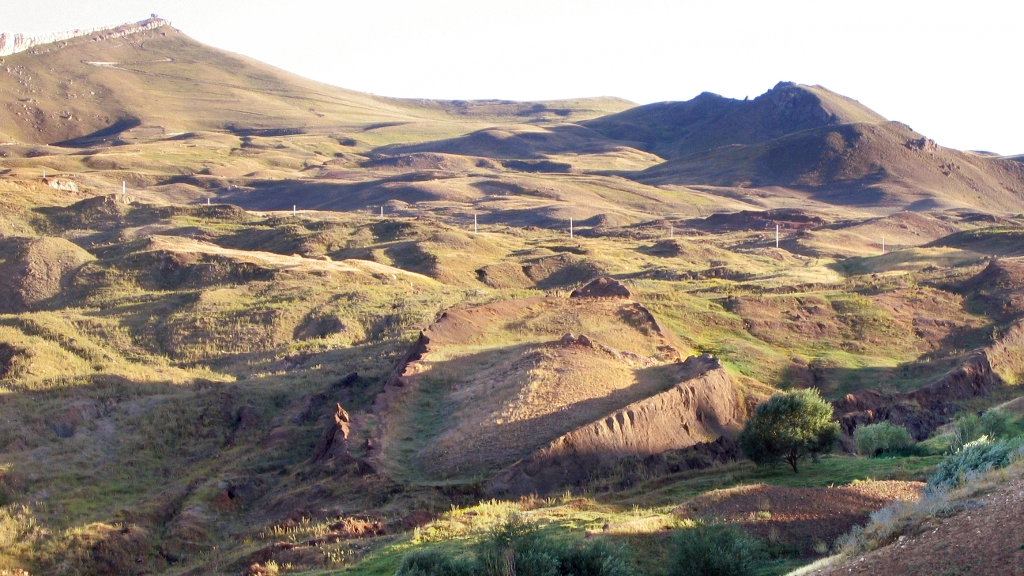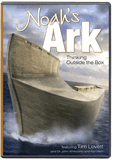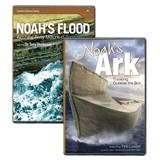How Did Noah’s Ark Get in the Water?
Launch Options for Noah’s Ark
Heavy rain, continental-scale flooding, earthquakes, desperate mobs—not your everyday conditions for launching a ship. How did Noah’s ark go from the construction site to floating in the floodwaters? Creation researcher John Baumgardner theorized:
In regard to the pre-Flood topography, my strong suspicion was that there were highland areas that were not destroyed until late into the cataclysm, and these areas would have been the ones where the flowering plants and mammals, including humans, would have dwelled. Something like this seems to be a logical requirement of the ordering of fossil types we observe in the rock record. So in principle, I do not have any big problem with a delayed launch of the ark well into the 40 days. As to the speeds of the currents, one can look at the sediments laid down during the cataclysm, and especially from the geometry of the crossbedding, estimate the water depth and current speed involved with their deposition. One concludes that speeds of several meters per second were common. It is my feeling that the wave action where the water was shallow was extremely violent throughout the 40 days. It would seem to me that however the ark was launched, it had to get into deeper water very quickly to avoid being destroyed by such violent wave activity.1
Here are several options for how the launch could have gone:
-
Mountaintop Launch. With a lower pre-flood topography than we see today, Noah located the high ground of his day—a wooded plateau of perhaps 1,000–2,000 m or so. The choice seemed strange to onlookers, and the ark was highly visible during construction. When the flood approached, the continental-scale currents pulverized the lowlands. Once the inland flow met the waters across the continent, the current was arrested and began to subside. The flood was reaching its peak by the time the ark was launched, with a very low current lifting Noah’s vessel from the construction site. The peak of a mountain was no place to find water, so a hydropower sawmill would have had to be down in the valley.
-
Crater Lake. Assuming the tectonic movement associated with the flood caused significant earthquake activity nearby, a mountain crater might have been a better choice. The scale of such an area could have been quite large, especially assuming the extinct volcano arose in creation week. This area could have provided a water source to make life easier during construction. A big plus would have been the damping and shock isolation provided by the rain-filled crater. It also meant the ark was “launched” before the peak of the flood which is the more conventional reading of Genesis 7:17–20. As with the mountaintop launch, the current subsided before the flood reached the level of the crater lake. One problem here is that waterpower was very limited—the crater lake did not drain anywhere so there could not be significant flow for harnessing hydropower.
-
Highland Area. The ark was located high enough to avoid the early flood violence but in a “young” valley draining a substantial plateau catchment area. This siting provided adequate water flow and potential head for harnessing waterpower. It was also a likely altitude to find a monoculture pine forest with timber suitable for the majority of the ark construction. Mixed hardwoods might have been nearby (perhaps in a lower location or in isolated pockets) for specific applications. The prevailing current also happened to hit the other side of the highland mountain range which sheltered the ark a little. However, the ark’s location in the “mouth” of a large valley meant there would be some current wanting to take it further into the valley, but the rate of rising floodwaters should have abated somewhat by then, and the runoff running in the opposite direction might have balanced the two.
There is a direct conflict between finding a decent catchment for waterpower and the flash flood conditions of the deluge rainfall. Water-powered sawmills of the 1800s were often washed away for this very reason. While the demolition of Noah’s sawmill was to be expected, the flash flood risk forced the ark to be some distance away from the water-powered sawmill. The scale of the necessary catchment also presents a problem with inhabitants surviving the early stages of the deluge. Baumgardner’s suggestion that humans made it to higher ground as a mechanism for the lack of humans in the fossil record means they were not suddenly covered by sediment like the dumb animals who didn’t see it coming. However, this begins to conflict with a large catchment unless the whole area was isolated from the civilization in the lowlands.
Noah’s Flood: A Historical Event
While the Bible doesn’t give us all the details we would like to have about certain events, Genesis is a historical record of events that really happened. Thinking about aspects such as how Noah’s ark was a seaworthy vessel that could have been launched safely into the floodwaters underscores the historicity of the Bible’s account.
Footnotes
- John Baumgardner, email correspondence, May 3, 2004.
Recommended Resources

Answers in Genesis is an apologetics ministry, dedicated to helping Christians defend their faith and proclaim the good news of Jesus Christ.
- Customer Service 800.778.3390
- Available Monday–Friday | 9 AM–5 PM ET
- © 2025 Answers in Genesis






